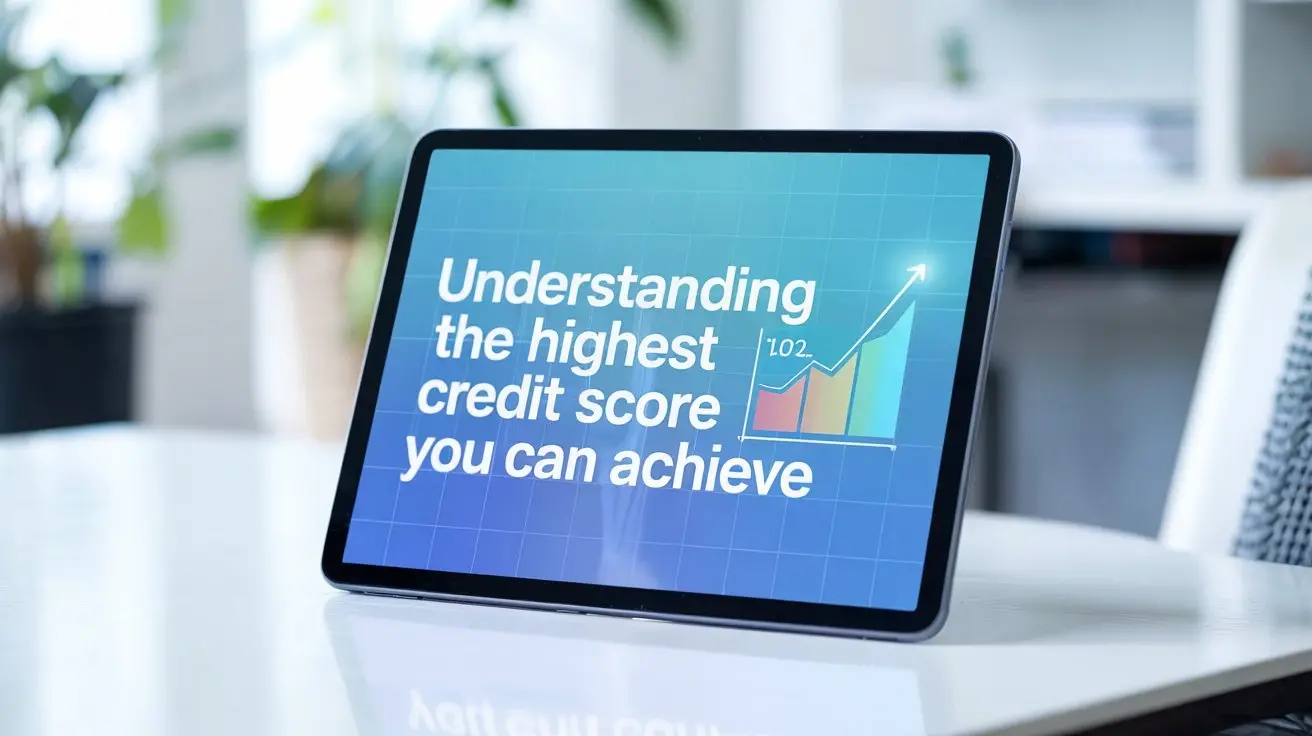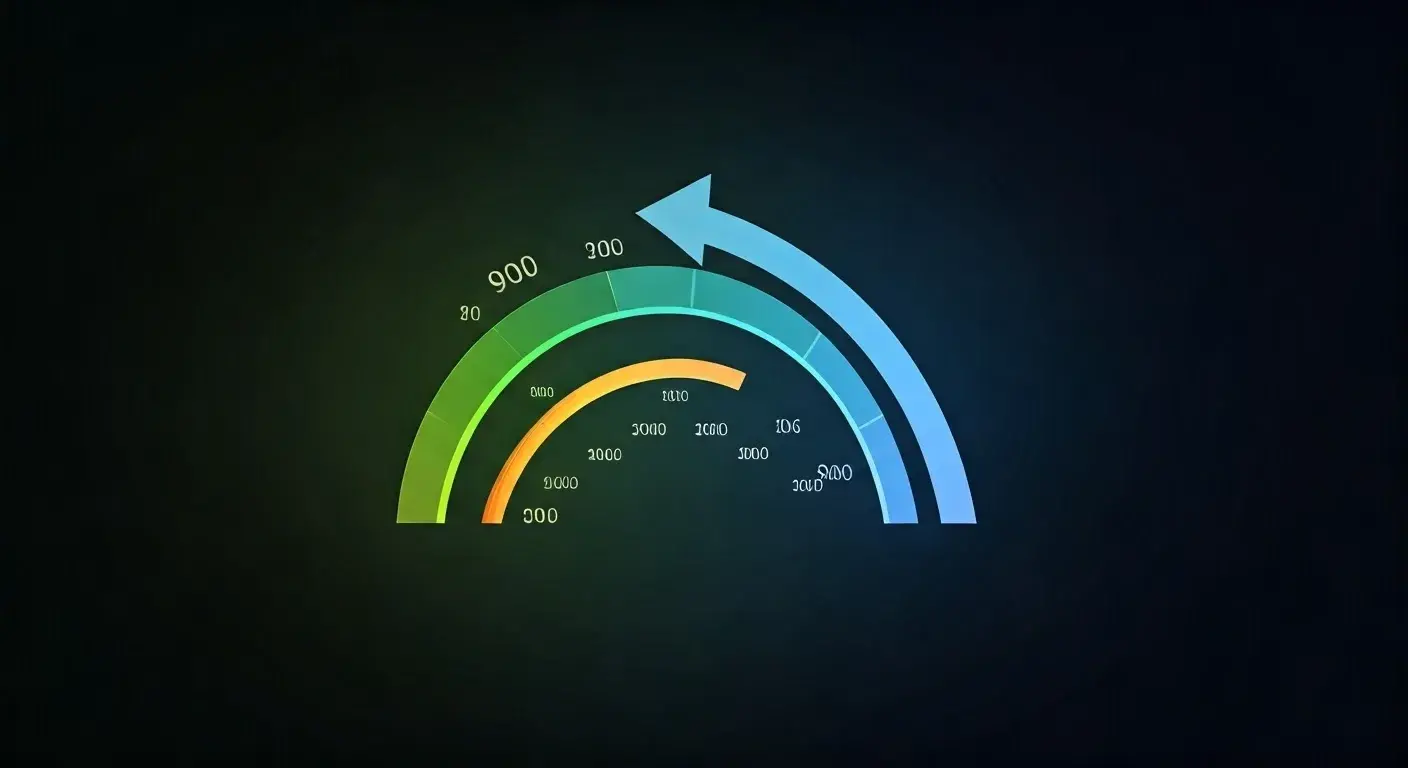-
Posted on: 02 Apr 2025

-
Unlock the secrets to a healthier credit score with our beginner-friendly guide. We'll break down complex credit concepts into simple, actionable steps, empowering you to build a strong financial future. Discover how small changes can lead to significant improvements in your creditworthiness.
Understanding Credit Scores: The Foundation
In the financial landscape of 2025, your credit score is more than just a number; it's a powerful indicator of your financial responsibility and a gateway to opportunities. Whether you're dreaming of owning a home, driving a new car, or simply securing a better interest rate on a loan, a good credit score is paramount. But what exactly is a credit score, and why does it hold so much sway? At its core, a credit score is a three-digit number, typically ranging from 300 to 850, that lenders use to assess your creditworthiness. It's a snapshot of your past borrowing and repayment behavior, predicting how likely you are to repay future debts. A higher score signals to lenders that you are a low-risk borrower, often translating into more favorable loan terms, lower interest rates, and easier approval for credit cards, mortgages, and other financial products. Conversely, a low score can present significant hurdles, leading to rejections, higher costs, and limited access to credit. Understanding this fundamental concept is the first, crucial step in your journey to financial empowerment.
For beginners, the world of credit can seem daunting. Terms like "credit utilization," "hard inquiries," and "credit mix" might sound like jargon. However, demystifying these terms is essential. Credit bureaus, such as Equifax, Experian, and TransUnion, collect information from lenders about your borrowing habits. This data is then used to calculate your credit score using complex algorithms. The most widely used scoring model is FICO, and its variations are what most lenders rely on. Understanding that your score is a dynamic entity, influenced by your actions over time, is key. It's not a permanent judgment but a reflection of your current financial habits. By learning what goes into this score and how to positively influence each component, you can proactively manage and improve your financial standing. This guide is designed to equip you with that knowledge, providing clear, actionable strategies that anyone can implement, regardless of their current financial situation.
The Five Pillars: Key Factors Influencing Your Credit Score
Your credit score isn't a mystery; it's a carefully calculated figure based on specific, identifiable factors. Understanding these pillars is the bedrock of any successful credit-boosting strategy. In 2025, the weight assigned to each factor remains largely consistent, emphasizing responsible financial behavior. Let's break down the five primary components that lenders and scoring models scrutinize:
1. Payment History (Approximately 35% of your score)
This is the single most influential factor in your credit score. It reflects whether you pay your bills on time, every time. Late payments, missed payments, defaults, bankruptcies, and collections can severely damage your score. Even a single 30-day late payment can have a noticeable negative impact, and the longer the delay, the greater the damage. Conversely, a consistent history of on-time payments demonstrates reliability and is a strong positive signal to lenders.
2. Credit Utilization Ratio (Approximately 30% of your score)
This refers to the amount of credit you're using compared to your total available credit. For example, if you have a credit card with a $10,000 limit and you owe $3,000 on it, your credit utilization ratio for that card is 30%. Experts recommend keeping this ratio below 30% across all your credit cards, and ideally below 10% for the best results. A high utilization ratio suggests you might be overextended financially, which can negatively impact your score.
3. Length of Credit History (Approximately 15% of your score)
This factor considers the age of your oldest credit account, the age of your newest credit account, and the average age of all your accounts. A longer credit history generally leads to a higher score because it provides lenders with more data to assess your long-term financial behavior. This is why it's often advised not to close old, unused credit accounts, as doing so can shorten your average account age.
4. Credit Mix (Approximately 10% of your score)
This factor looks at the variety of credit accounts you have. Lenders like to see that you can responsibly manage different types of credit, such as credit cards (revolving credit) and installment loans (like mortgages or auto loans). However, this factor is less impactful than payment history or credit utilization, and it's generally not recommended to open new accounts solely to diversify your credit mix if you don't genuinely need them.
5. New Credit (Approximately 10% of your score)
This factor considers how many new credit accounts you've opened recently and how many "hard inquiries" have been made on your credit report. Opening several new accounts in a short period or applying for credit frequently can signal increased risk to lenders. A hard inquiry occurs when a lender checks your credit report as part of a credit application. While necessary for obtaining credit, too many can temporarily lower your score.
Understanding the Impact of Each Factor
It's crucial to recognize the varying weights of these factors. While all contribute, focusing your efforts on improving payment history and credit utilization will yield the most significant gains. For instance, a single missed payment can undo months of good work in maintaining a low credit utilization ratio. Conversely, consistently paying on time and keeping balances low can significantly boost your score, even if other factors are not yet optimal.
2025 Credit Score Benchmarks
While exact score ranges can vary slightly by scoring model, here's a general overview of what different score ranges typically signify in 2025:
Score Range Credit Quality Implications 800-850 Exceptional Best interest rates, easiest loan approvals, highest credit limits. 740-799 Very Good Excellent loan terms, generally easy approvals. 670-739 Good Standard loan terms, most lenders will approve. 580-669 Fair Higher interest rates, more difficulty getting approved for prime loans. May require a co-signer. 300-579 Poor Significant difficulty obtaining credit, very high interest rates if approved, often requires a secured loan or deposit. Aiming for a score in the "Good" to "Very Good" range (670-799) is a realistic and achievable goal for most individuals seeking to improve their financial standing.
Building Credit from Scratch: A Step-by-Step Approach
For individuals who have never had credit before, often referred to as "credit invisibles," the journey to building a credit score can feel like a Catch-22: you need credit to get credit, but you need credit to build it. Fortunately, there are clear, actionable pathways to establish a credit history. This section outlines a beginner-friendly, step-by-step strategy to build your credit profile from the ground up.
Step 1: Get a Secured Credit Card
A secured credit card is an excellent starting point. Unlike traditional credit cards, secured cards require a cash deposit upfront, which typically becomes your credit limit. For example, a $200 deposit might grant you a $200 credit limit. This deposit mitigates the lender's risk, making it easier for individuals with no credit history to qualify. Choose a secured card that reports to all three major credit bureaus (Equifax, Experian, and TransUnion), as this is crucial for building your credit history.
- Action: Research secured credit cards from reputable banks or credit unions. Compare annual fees, interest rates, and any reporting practices.
- Example: You deposit $300, get a $300 credit limit. You use this card for small, manageable purchases.
Step 2: Use Your Secured Card Responsibly
Once you have your secured card, the key is consistent, responsible usage. Make small, planned purchases that you can easily afford to pay off. This demonstrates to lenders that you can manage credit effectively. Avoid maxing out the card, as this will negatively impact your credit utilization ratio, even with a secured card.
- Action: Use the card for everyday expenses like groceries or gas, but only spend what you can afford to repay immediately.
- Example: If your limit is $300, aim to keep your balance below $30 (10% utilization).
Step 3: Pay Your Bills On Time, Every Time
Payment history is the most critical factor in your credit score. For your secured card, ensure you pay at least the minimum amount due by the due date. However, to maximize your score, aim to pay the full statement balance each month. This prevents interest charges and ensures your payment history is spotless.
- Action: Set up automatic payments or calendar reminders to never miss a due date.
- Example: If your statement balance is $50, pay the full $50 by the due date.
Step 4: Consider a Credit-Builder Loan
Another effective tool for building credit is a credit-builder loan. These are small loans offered by some credit unions and community banks. The loan amount is held in a savings account and released to you after you've paid off the loan over a set period (typically 6-24 months). Your payments are reported to the credit bureaus, establishing a positive payment history.
- Action: Inquire at your local credit union or community bank about credit-builder loan options.
- Example: You take out a $500 credit-builder loan. You make monthly payments for 12 months. The bank reports these payments to the bureaus. At the end of the term, you receive the $500, minus any interest or fees.
Step 5: Become an Authorized User (Use with Caution)
If you have a trusted friend or family member with excellent credit, they might be willing to add you as an authorized user on one of their credit cards. As an authorized user, you get a card linked to their account. Their positive payment history and low credit utilization can then be reflected on your credit report, helping to build your score. However, it's crucial that the primary cardholder uses the account responsibly. Any negative activity on their account will also affect you.
- Action: Discuss this option with a trusted individual and ensure they understand the implications.
- Example: Your parent adds you as an authorized user to their 10-year-old credit card with a perfect payment history and low balance.
Step 6: Monitor Your Credit Report
Regularly checking your credit report is vital. You are entitled to a free copy of your credit report from each of the three major credit bureaus annually through AnnualCreditReport.com. Review it for accuracy, as errors can negatively impact your score. If you find any inaccuracies, dispute them immediately with the credit bureau.
- Action: Request your free credit reports annually and review them carefully.
- Example: You notice an account you don't recognize on your report and initiate a dispute.
Boosting Your Existing Credit Score: Proven Strategies
If you already have a credit history but want to improve your score, the strategies shift from building from scratch to refining and optimizing your existing credit profile. This involves a deeper dive into managing your accounts strategically and addressing any past issues. Here are proven methods to boost your credit score:
1. Consistently Pay Bills On Time
This cannot be stressed enough. Payment history is king. Even if you have a low score, making every payment on time going forward is the single most effective way to improve it. Set up reminders, automate payments, or use a budgeting app to ensure you never miss a due date. The positive impact of consistent on-time payments will grow over time.
- Action: Prioritize making at least the minimum payment on all accounts by the due date. Aim for full payments.
- Example: If you missed a payment two months ago, focus on paying all bills perfectly for the next six months.
2. Lower Your Credit Utilization Ratio
As mentioned, this is a major score driver. Aim to keep your credit utilization below 30%, and ideally below 10%, for each card and across all cards combined. If you have high balances, consider these strategies:
- Pay Down Balances: The most direct way is to pay down your outstanding debt. Focus on high-interest debt first if possible, but for credit score improvement, reducing the balance is key.
- Request a Credit Limit Increase: If you have a good payment history with a particular card issuer, you can request a credit limit increase. This will lower your utilization ratio without you having to pay down debt, assuming your spending remains the same. Be aware that some issuers may perform a hard inquiry for this.
- Balance Transfers: Consider transferring balances from high-interest cards to a card with a 0% introductory APR. This can help you pay down debt faster without incurring additional interest, allowing you to reduce your utilization. Ensure you understand the fees and the APR after the introductory period.
Example: You have a credit card with a $5,000 balance and a $10,000 limit (50% utilization). By paying down the balance to $3,000, your utilization drops to 30%. Alternatively, if you get a credit limit increase to $16,667, your utilization also drops to 30% without paying down debt.
3. Address Delinquent Accounts and Collections
If you have past-due accounts or accounts in collections, these are significant drags on your score. Contact the creditor or collection agency to negotiate a payment plan or a settlement. Even if you pay off a collection account, it will remain on your report for seven years, but it will be marked as paid, which is better than unpaid.
- Action: Contact creditors or collection agencies to discuss payment options.
- Example: Negotiate a "pay for delete" agreement with a collection agency, where they agree to remove the collection from your report in exchange for payment. (Note: Not all agencies offer this, and it's not guaranteed).
4. Avoid Opening Too Many New Accounts
While opening new credit can be part of a building strategy, doing so too frequently can harm your score. Each application typically results in a hard inquiry, and opening multiple accounts in a short period can make you appear risky to lenders. Space out your credit applications strategically.
- Action: Only apply for credit when you genuinely need it and have a good chance of approval.
- Example: Instead of applying for three new cards in a month, space applications out by 6-12 months.
5. Keep Old, Unused Accounts Open (If No Annual Fee)
As mentioned earlier, closing old credit accounts can shorten your average age of credit history and potentially increase your credit utilization ratio if you have balances on other cards. If an old account has no annual fee and you don't use it, consider keeping it open. This contributes positively to your credit history length and available credit.
- Action: Review your credit accounts. Identify old cards with no annual fee that you no longer use.
- Example: You have a credit card opened 15 years ago with a $5,000 limit and no annual fee. Keeping it open helps your average account age.
6. Dispute Errors on Your Credit Report
Errors on your credit report can significantly lower your score. These can include incorrect late payment marks, accounts that aren't yours, or inaccurate balance information. Take advantage of your right to dispute these errors with the credit bureaus. The process involves submitting a dispute, and the bureau will investigate with the creditor.
- Action: Obtain your credit reports from AnnualCreditReport.com and meticulously review them for any inaccuracies.
- Example: You find a late payment reported on a card you always paid on time. You file a dispute with the credit bureau, providing proof of timely payments.
7. Consider a Balance Transfer for High-Interest Debt
If you're struggling with high-interest credit card debt, a balance transfer to a card with a 0% introductory APR can be a powerful tool. This allows you to pay down the principal more effectively without the interest accumulating. Be mindful of balance transfer fees and the APR after the introductory period ends. This strategy primarily helps by reducing your credit utilization and allowing you to pay down debt faster.
- Action: Research balance transfer offers and compare fees and introductory periods.
- Example: Transfer a $7,000 balance from a card with 20% APR to a card with 0% APR for 18 months and a 3% balance transfer fee ($210). This saves you significant interest charges.
Debunking Common Credit Score Myths
The world of credit scores is rife with misinformation. Understanding what's true and what's not can save you from making costly mistakes. Here, we debunk some of the most prevalent credit score myths circulating in 2025:
Myth 1: Checking Your Own Credit Score Hurts Your Score.
Fact: This is false. When you check your own credit score or report using services provided by credit card companies, banks, or free credit monitoring sites, it's considered a "soft inquiry." Soft inquiries do not affect your credit score in any way. Only "hard inquiries," which occur when you apply for new credit, can have a minor, temporary impact.
Myth 2: Closing Old Credit Cards Will Immediately Boost Your Score.
Fact: In most cases, closing old credit cards can actually hurt your score. This is because it reduces your average age of credit history and can increase your credit utilization ratio if you carry balances on other cards. Only consider closing a card if it has a high annual fee and you no longer use it, and even then, be aware of the potential score impact.
Myth 3: You Need to Carry a Balance to Build Credit.
Fact: This is a dangerous myth. Lenders want to see that you can manage credit responsibly, which includes paying your bills on time. Carrying a balance incurs interest charges and increases your credit utilization ratio. The best strategy is to pay your statement balance in full each month. If you must carry a balance, keep it as low as possible.
Myth 4: Your Credit Score is Fixed and Cannot Be Changed.
Fact: Your credit score is a dynamic number that reflects your current financial behavior. While past negative events can have a long-lasting impact, consistent positive actions – like on-time payments and low credit utilization – can gradually improve your score over time. It's a marathon, not a sprint.
Myth 5: Checking Your Credit Report Too Often is Bad.
Fact: As mentioned, checking your own credit report (soft inquiry) is harmless. The concern is usually about too many hard inquiries from applying for new credit. Monitoring your report regularly for errors or changes is a good practice, not a detrimental one.
Myth 6: All Debts Affect Your Credit Score Equally.
Fact: Not all debts are reported to credit bureaus in the same way. For instance, utility bills and cell phone bills were historically not reported unless they went to collections. However, some newer services now report these payments. Primarily, credit cards, installment loans (mortgages, auto loans, personal loans), and student loans are the main drivers of credit scoring.
Myth 7: A Co-signer Can Immediately Fix Bad Credit.
Fact: While a co-signer with excellent credit can help you get approved for a loan or credit card you might not otherwise qualify for, their co-signing doesn't automatically fix your bad credit. The loan or card will still appear on your credit report, and your payment behavior will be the primary factor influencing your score. If you fail to make payments, it will harm both your and your co-signer's credit.
Myth 8: Denied Credit Means You Can Never Get Credit Again.
Fact: Being denied credit is a setback, not a permanent barrier. Lenders are required to send you an adverse action notice explaining why you were denied. Use this information to understand your weaknesses and take steps to improve your creditworthiness before applying again. Often, a denial indicates issues like high debt, recent credit inquiries, or a thin credit file.
Essential Tools and Resources for Credit Health
Navigating the world of credit can be complex, but numerous tools and resources are available to help you manage and improve your credit score effectively. Leveraging these can make the process smoother and more successful. Here are some essential resources for 2025:
1. Free Credit Score Monitoring Services
Many credit card issuers and financial institutions now offer free access to your credit score. While these scores may not always be the exact FICO score used by lenders, they provide a good estimate and allow you to track your progress. Services like Credit Karma, Credit Sesame, and Experian Boost also offer free credit monitoring and insights.
- Benefit: Allows you to track your score's movement and identify factors influencing it without cost.
- Example: Using your credit card's app to check your VantageScore monthly.
2. AnnualCreditReport.com
This is the official, government-mandated website where you can obtain your free credit reports from Equifax, Experian, and TransUnion. By law, you are entitled to one free report from each bureau every 12 months. It's crucial to review these reports for accuracy and to identify any fraudulent activity.
- Benefit: Provides the most comprehensive view of your credit history directly from the bureaus. Essential for identifying errors.
- Example: Requesting your Equifax report to check for any unknown accounts.
3. Credit Counseling Agencies
Non-profit credit counseling agencies can offer valuable guidance for individuals struggling with debt. They can help you create a budget, negotiate with creditors, and set up a Debt Management Plan (DMP). A DMP involves making a single monthly payment to the agency, which then distributes it to your creditors. This can help you pay off debt and improve your credit history, though participation in a DMP may be noted on your credit report.
- Benefit: Professional, often free or low-cost, advice on managing debt and improving financial habits.
- Example: Working with a certified credit counselor to consolidate payments for multiple credit cards.
4. Budgeting Apps and Tools
Effective budgeting is foundational to good credit management. Apps like Mint, YNAB (You Need A Budget), and PocketGuard can help you track your spending, set financial goals, and ensure you have funds available to make your bill payments on time. They provide a clear overview of your financial inflows and outflows.
- Benefit: Helps you gain control over your finances, identify areas for savings, and ensure you can meet your debt obligations.
- Example: Using Mint to categorize your monthly expenses and identify where you can cut back to allocate more towards debt repayment.
5. Educational Websites and Blogs
Reputable financial education websites and blogs offer a wealth of information on credit scores, debt management, and personal finance. Look for resources from government agencies (like the Consumer Financial Protection Bureau - CFPB), major financial news outlets, and well-known personal finance experts. These resources can provide deeper insights and answer specific questions.
- Benefit: Continuous learning and staying updated on best practices in personal finance.
- Example: Reading articles on the CFPB website about consumer rights related to credit reporting.
6. Secured Credit Cards and Credit-Builder Loans Providers
As discussed in the building credit section, specific financial products are designed for this purpose. Research banks and credit unions that offer secured credit cards with no annual fees and credit-builder loans. Many online platforms also aggregate information about these products, making comparison easier.
- Benefit: Provides tangible tools to establish or rebuild credit history.
- Example: Comparing offers from different banks for secured credit cards based on their reporting practices and potential for credit limit increases.
By utilizing these tools and resources, you can approach credit management with greater confidence and make informed decisions that lead to a stronger financial future. Remember that consistency and diligence are key to long-term credit health.
Conclusion
Mastering your credit score is an achievable goal, even for beginners. By understanding the foundational elements that influence your score – payment history, credit utilization, credit history length, credit mix, and new credit – you gain the power to make informed financial decisions. Whether you're starting from scratch with secured credit cards and credit-builder loans or looking to refine an existing profile, consistent on-time payments and a low credit utilization ratio are your most potent allies. Remember to debunk common myths and leverage available resources like free credit monitoring and your annual credit reports to stay informed and identify any discrepancies. Your credit score is a reflection of your financial habits, and with diligence and strategic action, you can cultivate a strong credit profile that opens doors to financial opportunities. Start today, and build a more secure financial future.











